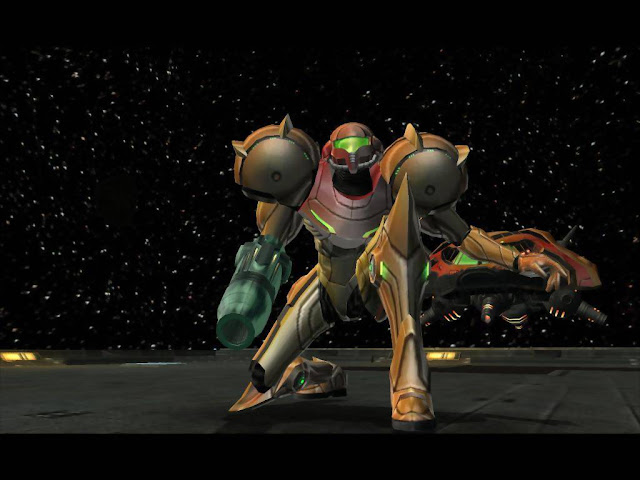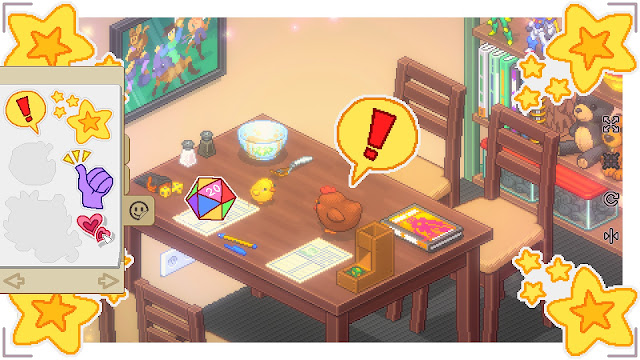Today is the 20th anniversary of the GameCube, Nintendo's proud, purple console's North American launch. While the console didn't sell to its full potential (and that's somewhat of an understatement), it did lay down the foundation for the publisher's future consoles, starting with the revolutionary Wii, dipping severely with the failure that was the Wii U, and then rebounding in a remarkable way with the Switch.
SPC celebrates this auspicious occasion with a look at ten of the best games that launched on Nintendo's colorful lunch box-like console. From titles that changed the gaming world forever to games that simply brought lots of joy into those who played them, this list of ten games shows why the GameCube absolutely rocked.
After checking out these picks (including the honorable mentions at the tail end), be sure to let the community know which ten GameCube games you'd include in such a list.
10) Luigi's Mansion
No doubt Nintendo fans were both disappointed and stunned when the tradition of a Mario game launching alongside a new Nintendo console didn't happen. We're no stranger to this now, but back then, it was a big deal. Instead, Mario fans saw the portly plumber's brother, usually in Mario's shadow, take on the role of hero with Luigi's Mansion. More than just a tech demo to show off the technological capabilities of the GameCube hardware and the console's controller, Luigi's Mansion was a stellar game, offering a ghost-busting adventure through a multi-floor haunted house equally full of puzzles to solve as it was infested with paranormal activity!
While the game ends up being a bit of a brief one compared to a more meaty Mario adventure, Luigi's Mansion would go on to have Luigi see lengthier adventures, including his most recent starring role in the Switch's Luigi's Mansion 3, what I think is one of the Switch's best exclusives, apart from being a 10-million seller. We can thank the not-so-humble beginnings of this success story in huge part to Luigi's lovely GameCube launch title.
9) Mario Kart: Double Dash!!
With the hotness that is Mario Kart 8 Deluxe still burning rubber on sales charts around the globe, it goes to show that Mario Kart as a series is as beloved as ever. That entry introduced anti-gravity sections of tracks to it, and the Mario Kart series has never been shy about introducing new mechanics to the foundation that Super Mario Kart originally laid down. Mario Kart: Double Dash!! remains one of my favorite entries in the series (and really, there isn't a poor entry to be seen) due to its bold and innovative dual-kart mechanic.
Two players rode in the same kart, one steering and one utilizing items. Both could switch positions on the fly. It made for an interesting and incredibly entertaining mechanic that hasn't really been copied aside from Crash Tag Team Racing, and that was a bit of an altered version of the mechanic. Regardless, with a great lineup of tracks, an impressive roster of characters, and magnificent multiplayer mayhem, Mario Kart: Double Dash!! brings double the amount of fun.
8) Animal Crossing
Going back to playing the original Animal Crossing, an updated version of the Japan-only Nintendo 64 game Animal Forest, brings with it a ton of nostalgia for me. When the game launched in 2002, I played daily for literally a year, and after the fact, if I missed a day, I'd feel tremendous guilt from doing so. I would have dared someone to have said, "It's just a game" to me back then. Animal Crossing was the entry that would set the building blocks of the series, growing and expanding to what we know now with the mega-hit Animal Crossing: New Horizons on the Switch. While the original Animal Crossing is quite dated nowadays, it does possess plenty of uniqueness to it, such as NES games to collect (and play), villagers with much more attitude (if you're into that sort of thing), and a simple elegance that worked well for the premiere entry in the series.
7) Star Wars Rogue Leader: Rogue Squadron II
From Factor 5 came this amazing GameCube launch title that still looks absolutely jaw-dropping. You really have to wonder what kind of tricks and sorcery Factor 5 used to get Star Wars Rogue Leader: Rogue Squadron II to look so phenomenal. Plus, it was just a well crafted game, putting players in the cockpits of X-Wings, Y-Wings, Snowspeeders, and more within and outside of battles from the original trilogy. From Bespin to the Battle of Hoth, the environments and battlefields lending themselves to epic dogfights and confrontations made for one heck of a way to kick off the GameCube's launch. The sequel, Rebel Strike, also on the GameCube, would even allow two players to play through the entire Rogue Leader campaign together exclusively in co-op. Though the added on-foot missions brought down the experience, being a bit too ambitious for their own good.
6) Soul Calibur II
The soul still burned, and after Sega parted ways with its console development and manufacturing, the Soul Calibur series went multiplatform and in a big way. Each console that received the game: PlayStation, Xbox, and of course the GameCube, saw an exclusive character added to the roster of this excellent 3D arena fighter. While PlayStation received Heihachi of Tekken fame, and Xbox received comic book anti-hero Spawn, GameCube owners got the best end of this deal with the inclusion of The Legend of Zelda's Link, donning his Ocarina of Time tunic and attire. One could argue this addition alone makes the GameCube version the most worthwhile of the trio. Regardless, Soul Calibur II remains one of the more enjoyable entries in the Soul Calibur series, now having released six numbered entries, and stands as one of the best games within the GameCube's incredibly awesome library.
5) The Legend of Zelda: The Wind Waker
Although I would argue that the Wii U's HD remaster of Link's ocean-traversing adventure stands (or would it be "sails"?) as the definitive version, there's no doubting how great of a game the original The Legend of Zelda: The Wind Waker truly was and still is, for that matter. Though sailing the ocean waves of the Great Sea is more taxing than it needs to be, the late-game Triforce Quest is a pacing-stopper, and other issues that were remedied with the Wii U version exist, the brilliance and beauty of the Great Sea is immense to this day through the GameCube original's wondrous cel-shaded glory. This of course was hated by the most ardent and passionate of fans upon reveal back at a Spaceworld showcase. The meltdowns and madness over "Celda" have since died down, offering a perspective for most that The Wind Waker shows Link at his most expressive, most charming, and just most darned adorableness, too.
4) Paper Mario: The Thousand-Year Door
The sequel to the Nintendo 64's Paper Mario unfolded into a galactic adventure against the dreaded X-Nauts, complete with outrageous humor, memorable characters, incredible environments to explore, and an updated timing-based battle system that fans of the Paper Mario series up until that time had grown to expect and love. Paper Mario: The Thousand-Year Door delivered RPG action, hilarious moments by the minute, and enough charm to make it a much beloved classic for both Mario and RPG fans alike. While I do enjoy the modern takes on the Paper Mario series, it's a shame that Nintendo hasn't returned to the classic Paper Mario formula since The Thousand-Year Door. At least we do have two games that take on the classic-style mantle, right?
3) Resident Evil 4
Now released on pretty much every platform under the sun (including even a VR version!), it can't be understated how much of an event for GameCube owners Resident Evil 4 truly was. It was a massive and magnificent entry in the Resident Evil series that was specifically built for Nintendo console owners, and it did NOT disappoint. It made this writer a fan of the franchise, and breathed new life into Resident Evil as a whole.
The three acts of Resident Evil 4 (the village, the castle, and the island) brought with them an immense amount of action, moments of suspense and horror, and plenty of thrills and chills in equal measure to make for one intense and pretty much perfectly paced game. Resident Evil 4 still remains one of my favorite games to date, and I've purchased it on more platforms than I'd care to realize. But, that says more to the excellent quality of the game. Few titles can be called this, but Resident Evil 4 is a definite masterpiece.
2) Metroid Prime
Speaking of masterpieces, Metroid Prime's excellence came from an unlikely place: a studio plagued with disorganization and mismanagement prior to Nintendo stepping in and sort of salvaging it. Retro Studios is now one of Nintendo's premier Western studios, and the start to the developer's rise in Nintendo's ranks can be traced right to Metroid Prime. Creating a Metroid game, a series that had been stuck to 2D for the longest time, and moving it to the third dimension would be a most impossible task for many developers. However, with Nintendo's help and guidance, Retro Studios not only managed to make it work, but also make one of the series' best entries, one of the GameCube's greatest titles, and one of my favorite games of all time. Not bad for a first go-round with Nintendo, was it!
Between the immersive environments absolutely dripping and oozing with intense atmosphere, the brilliant combat and shooting mechanics, and the masterful approach to level design showcased by the developers, Retro Studios absolutely SMASHED expectations. A truly fantastic game in every aspect, Metroid Prime is a masterclass in how to take a 2D series and retool it into 3D.
1) Super Smash Bros. Melee
Speaking of smashing, we have this launch window title for Nintendo's GameCube: Super Smash Bros. Melee, a game that pits Nintendo's all-star arsenal of characters in a fighting game--one perfect for parties or even competitive play. The facelift that the Smash Bros. series saw between the Nintendo 64 original Super Smash Bros. and Melee is just astounding to me. It can't be understated just how much of a markedly improved sequel from top to bottom Melee was, offering better fighting mechanics, more characters, more stages, more modes, more items, more options, and just more goodness than ever before at the time of its release.
The addition of more compelling single-player content like the awesome Adventure Mode, All-Star Mode, more characters and stages to unlock, and the inclusion of collecting trophies: models of Nintendo characters, places, and more detailing the history of the company.
Super Smash Bros. Melee still stands a popular game within the Smash Bros. series, even as bigger and arguably better sequels have since released. It's a highly competent and capable fighter for competitive play, offers a wide roster of strategies and combat abilities, and is just to this day, a blast to pop in play, whether you're a serious player or just casually want to smash with your bros.
===
Honorable Mentions: F-Zero GX, Super Monkey Ball 2, Super Mario Sunshine, Viewtiful Joe, Tony Hawk's Pro Skater 3, Phantasy Star Online Episode I & II























